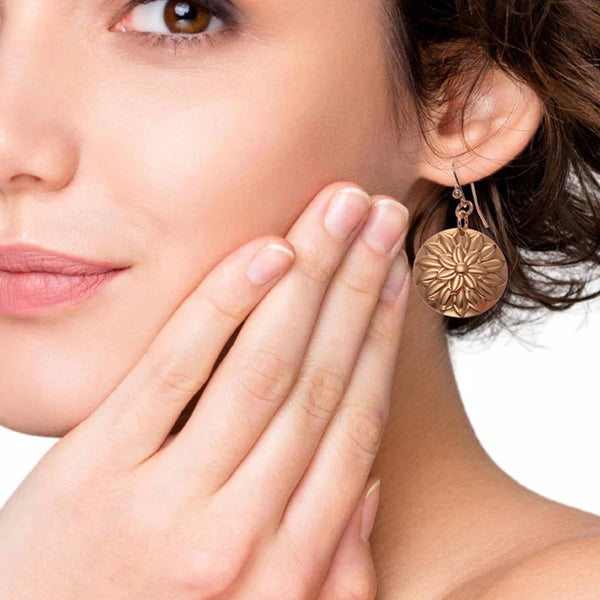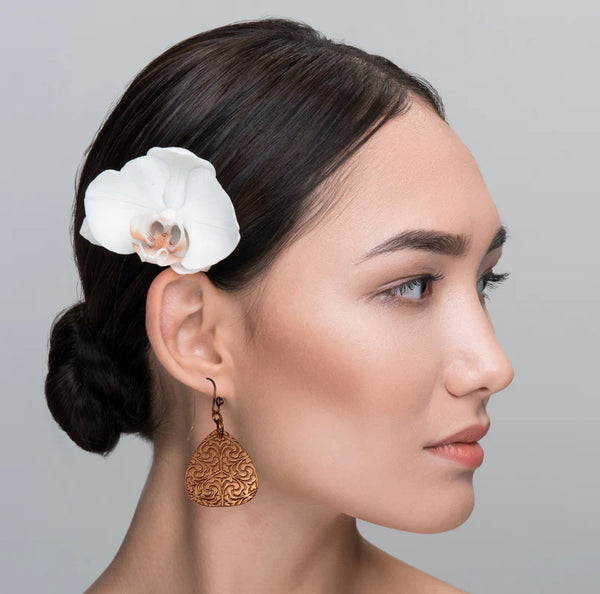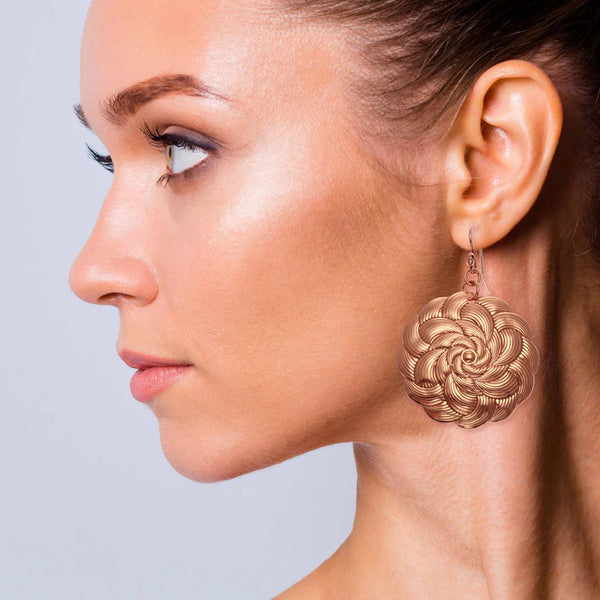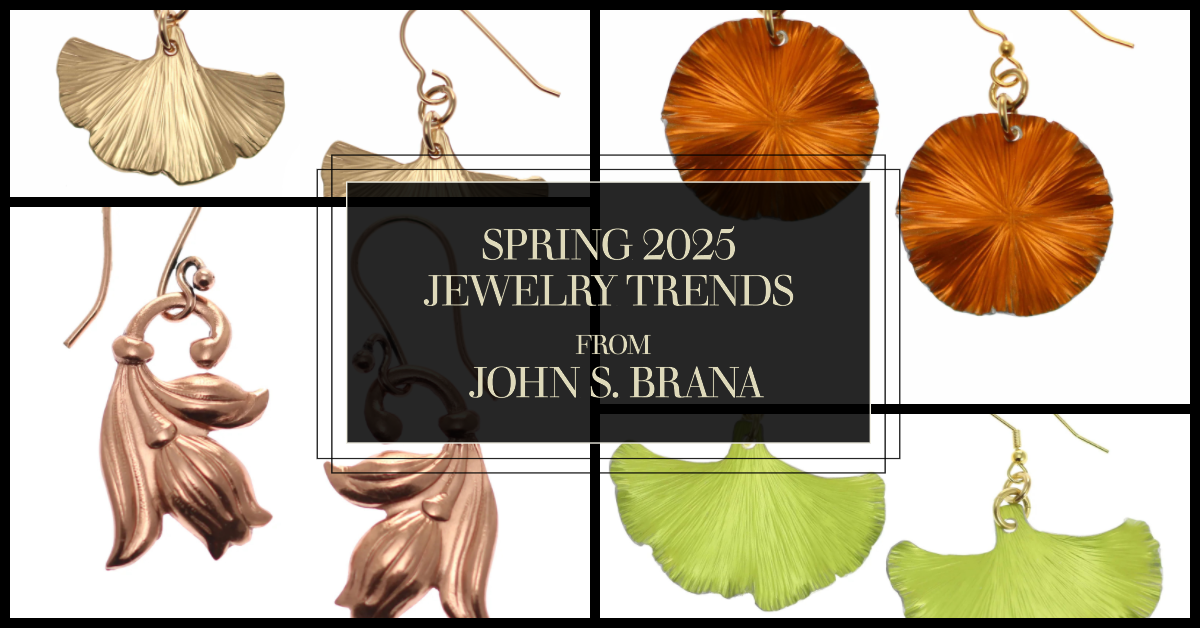Essential Tips for Caring for Your Handmade Jewelry

Table of Contents
- Key Takeaways
- What Makes Handmade Jewelry Unique
- Daily Habits for Preserving Handmade Pieces
- Detailed Cleaning Methods & Material Differences
- Storage Tips for Longevity
- Preventing Tarnish & Keeping Shine
- When Professional Help Is Needed
- Expert Styling & Final Thoughts
- Frequently Asked Questions
Key Takeaways
- Know the metal or gem type to pick the right cleaning routine
- Protect jewelry from water, chemicals, and physical damage
- Keep everything organized in a dry, safe place
- Polish gently, but frequently
- See a jeweler for tricky repairs or re-plating
What Makes Handmade Jewelry Unique
I’ve always found that my biggest joy as a jeweler is shaping metal into small wonders. Sometimes I ask myself: “Why do folks go crazy over handmade pieces when there’s so many mass-produced items around?” Let me tell you a quick story: I remember making a hammered cuff from copper that had such an interesting texture, I almost kept it for myself. Each tap of my hammer formed subtle ridges that nobody else could replicate exactly. That’s the kind of one-of-a-kind magic that only human hands can create.
But I might also ask: “Does the texture affect wearability?” Actually, it can. Hammered surfaces can be more scratch-resistant because they’re work-hardened. If you’re curious about the different designs I’ve experimented with, you can check out John S. Brana’s Jewelry Collections. There, you’ll see hammered cuffs, embossed earrings, plus plenty of shapes that might suprise you.
Here’s another example. I used to design copper earrings with embossed damask patterns. People said they looked like miniature paintings. The truth is, I spent hours carefully pressing those designs into the metal, then shaping them. That’s the biggest difference from big-brand factory jewelry: each piece is personal, like art you get to wear.
Now, you might be thinking, “Do hammered or embossed finishes weaken the metal?” In fact, consistent hammering actually strengthens many metals by realigning their molecular structure—especially copper, bronze, or brass. That also means these metals are less likely to bend out of shape if you treat them well.
I believe that’s the core reason handmade jewelry stands out. It’s not about fancy talk or big words. It’s that you can see and feel the personal work behind every curve or swirl. If you want a peek at one of my hammered silver link designs, you can click the image below to see how hammered surfaces catch light in a lively way:

So that’s the real uniqueness. Handmade jewelry has heart, and it’s something I’ve poured my life into as a craftsman. You won’t see that kind of soul in something churned out of a big factory, and that’s exactly why I keep forging new designs every day.
Daily Habits for Preserving Handmade Pieces
I often get asked: “Hey John, do you put jewelry on before or after your morning routine?” That question might sound silly, but it matters. If you spritz perfumes or hair products on top of your earrings, you’re exposing delicate metals or gemstones to chemicals. So here’s a short daily rundown:
- Put jewelry on last.
- Remove jewelry before showering or swimming.
- Avoid lotions or sprays while wearing it.
- Store each item separately.
- Use a soft, clean cloth to wipe away body oils.
Copper, brass, and bronze are popular in my workshop. They each have their own quirks. Copper Jewelry is especially prone to color changes, so if you want to keep that gleam, handle it carefully. If I ever notice small tarnish specks, I just wipe them gently after I remove the piece at night. That tiny habit helps a lot in the long run.
Now, do these steps matter for folks who prefer more robust metals like stainless steel or aluminum? Actually, yes. Even though Brass Jewelry or aluminum is tough, sweat can dull the finish over time. A quick wipe keeps them shiny. Keeping moisture away is good for almost every metal, not just the super-soft ones.
I also advise people to avoid exercising with large hammered cuffs or dangling earrings. You might snag them on your clothing or scuff them on gym equipment. Once, a customer wore a wide hammered 14K gold cuff to a friendly soccer match. The cuff got scratched up pretty badly. Lesson learned: sports and precious metals are not the best combination.
As you get into these small habits, you’ll see how easy it is. Think of it like brushing your teeth; it becomes second nature. After all, these pieces can hold sentimental value. My mother’s hammered gold bangle was special to her, and her simple routine preserved it for a decade.
And if you’re curious how hammered copper pairs with a gemstone, you can take a peek at this cuff I created:

Those are my best everyday tips for preserving your pieces. Simple. Straightforward. And it works for any handmade jewelry you treasure.
Detailed Cleaning Methods & Material Differences
One question I hear all the time is: “Do I clean my silver the same way I clean my aluminum?” My answer: Absolutely not. Every metal has a unique personality. Silver tarnishes quickly if you leave it out in the open air, whereas aluminum rarely tarnishes but can pick up smudges or dulls over time. And if you’re dealing with gold-filled items, that’s yet another routine. Let’s break it down:
General Cleaning Steps (For Most Metals)
- Fill a small bowl with warm water and a drop of gentle soap.
- Use a soft toothbrush to lightly scrub.
- Rinse and pat dry—avoid rubbing vigorously.
- Let it air-dry completely before storing.
But if you own Nu Gold Earrings, try not to use harsh polishes that might strip the surface. Nu Gold (often called “Jeweler’s Brass”) benefits from a mild soap bath and a quick buff. Meanwhile, real gold-filled pieces should never soak in strong chemicals, or you risk thinning out the gold layer.
I’ve also had folks ask about Aluminum Bracelets. Aluminum is easy to keep clean. I polish and clean them down with a mild cleanser and rinse. If they’re anodized (coated for color), a simple wipe is enough. Over-scrubbing might remove the tinted layer.
When dealing with stones like pearls, opals, or anything soft, don’t use the same brush you use for metals. I have a super soft baby toothbrush for gemstones—though sometimes I just use my fingertips with mild soap. Hard bristles can scratch certain gems, so it’s better to be safe.
In my early days, I nearly ruined a pearl ring by dipping it in strong chemical cleaner meant for silver. The ring survived, but the pearl got a dull film I couldn’t fully fix. So do your homework. Also, if you want to add a bold pop of color to your style, check these bright anodized aluminum leaf earrings:

That’s a quick snapshot of different cleaning methods. The biggest tip: always go gentler than you think. Overly harsh polishing might do more harm than good. Each metal and gemstone has its own tolerance, so being cautious is the best approach.
Storage Tips for Longevity
Tossing a delicate copper cuff into a drawer full of random stuff—bad move. By the time you will wear it again, it will be scratched and bent. Treat jewelry storage like a ritual. Here’s how:
- Separate Each Piece: Soft pouches or small boxes keep them from scratching each other.
- Cool, Dry Space: Humidity can speed up tarnish, especially in silver or copper.
- Hang Necklaces: This prevents tangles and kinks.
- Use Silica Gel or Anti-Tarnish Strips: They help absorb moisture.
- Breathable Pouches for Pearls: They need a bit of air.
You might ask, “Does it matter if I store my Bronze Earrings Collection near my copper ones?” It’s not a disaster if you do, but separating them is always a good idea. Different metals can react if they rub against each other a lot.
Let me put that in a quick table for clarity:
| Metal Type | Best Storage Option | Extra Note |
|---|---|---|
| Copper | Airtight bag + anti-tarnish strip | Keep away from moisture |
| Bronze | Soft pouch, can share the strip | Don’t stack with other metals |
| Aluminum | Pouch or separate compartment | Rarely tarnishes, but can scratch |
| Silver | Airtight container, anti-tarnish strip | Tarnishes fast in open air |
| Gold-Filled/Brass | Soft bag, minimal contact with others | Protect the gold layer/brass shine |
Keep everything labeled because you might forget which pouch has what. If you own a big variety, you’ll appreciate that organization.
Here’s a pair of Damask Embossed Bronze Moroccan Drop Earrings that definitely deserve their own safe spot:

So the main takeaway? Storage might sound boring, but it’s a huge factor in preserving the looks and shape of your handmade jewelry. If you can find a designated spot, it’s worth the little bit of effort. Trust me, you won’t regret it when you pull out that perfect cuff months later and it still shines like the day you bought it.
Preventing Tarnish & Keeping Shine
I sometimes hear: “John, how do I keep my copper cuff from turning all dark and funky?” The tarnish color can be pretty if you’re into that rustic patina. But if you prefer the bright copper sheen, you’ll want to take some precautions.
- Wear It Often: Sounds odd, but natural skin oils can slow down tarnish.
- Apply Clear Coating: Some folks use a thin layer of clear nail polish or protective wax.
- Stay Away from Chemicals: Household cleaners are the enemy.
- Polish Gently: Using a cloth and polish designed for your metal works best.
If you enjoy the changing patina on Copper Bracelets, do nothing special. Let it evolve. But if you want to maintain shine, a mild lemon juice and baking soda scrub can help lighten the tarnish. Personally, I do a quick polish on my copper cuffs every few months with Mother's Mag & Aluminum Polish (works on most metals) if I want them bright.
Bronze jewelry also tarnishes, though typically it turns a more brownish color than copper. Some owners like that vintage look. Others prefer a gold-like gleam. If you’re in the latter group, store your bronze pieces with anti-tarnish strips or in an airtight container. Also, a quick rub with a polishing cloth is your best friend.
Here’s a men’s copper cuff with a snakeskin pattern. I love how the texturing makes it unique:

One time, I absentmindedly wore that cuff while cleaning my kitchen. The next day, it had some green spots from the cleaning chemicals. Luckily, a lemon-and-salt rub took care of most of it, but I learned my lesson. Keep your jewelry away from bleach, ammonia, and even some daily soaps if you can.
No matter what metal you have, consistent but gentle maintenance is key. Think of it like watering a plant—too much is as bad as too little. For me, that sweet spot is a mild cleaning every few weeks, plus storing things well. That’s all it really takes to keep the shine going strong.
When Professional Help Is Needed
Sometimes I get frantic calls: “I dropped my favorite earring and the stone popped out—what do I do?” While there’s plenty you can handle at home, there are moments when you need a pro.
Here are a few scenarios:
- Broken Gemstone Settings: Loose or missing stones need a jeweler’s care.
- Damaged Clasps or Links: If your necklace clasp snaps, DIY fixes might weaken it further.
- Deep Scratches or Gouges: You risk damaging the piece if you try to buff them out with the wrong tool.
- Re-Plating: Gold-filled or silver-plated items can wear thin over time.
I also advise checking out my Copper Blog or Bronze Blog for tips on caring for these metals. But if something is seriously broken, your best bet is a skilled jeweler who can match metal types and patina. One of my customers once tried to fix a copper earring with super glue and ended up discoloring the entire area. That’s a fixable problem, but I had to strip the earring’s surface and re-emboss some of its pattern. It’s always better to let a professional handle that stuff.
Another sign you might need expert help is if your metal starts reacting to your skin. Sometimes, adding a protective layer or re-applying a sealant is best done by a jeweler. And trust me, a pro jeweler sees everything—broken wires, twisted prongs, or old tarnish that’s decades deep.
Check out these Copper Floral Disc Drop Earrings. If the disc got bent or the ear wire snapped, I’d definitely repair it carefully:

And don’t feel bad if you have to send something in. Even I get stumped sometimes when a piece is severely damaged. Having a professional’s perspective saves time, and it also preserves the artistic integrity of the piece. Because if you truly love handmade jewelry, it’s worth giving it the best care possible, especially in a crisis.
Expert Styling & Final Thoughts
People often assume I only care about how the metal is made, but I also care about how it looks with different outfits. I ask myself: “Does that hammered cuff vibe well with a floral dress or a sleek blazer?” My short answer is yes—to both. Handmade pieces often have a textured or earthy vibe, which can complement casual wear or even a more formal getup.
A customer favorite is wearing something bold like Damask Embossed Copper Triangular Drop Earrings (click below) with a neutral outfit. That earring shape can be a showstopper.

Bronze and copper jewelry can feel warm against your skin and add a subtle glow. If I’m designing a new necklace for the Bronze Necklace Collection, I’ll consider how it drapes on the collarbone and how the color pairs with typical wardrobes. People with cooler skin tones sometimes gravitate to silver or aluminum pieces, but I say go with what you love.
One tip: If you want your jewelry to pop, wear simpler clothing. This keeps the focus on the metalwork. On the flip side, if your outfit is already busy, pick smaller, simpler accessories so you don’t overwhelm the look. I find that hammered or embossed patterns on copper or bronze can catch the eye, so pairing them with a single-color top makes them stand out.
And if you’d like a playful style, check out these Damask Embossed Copper Moroccan Drop Earrings, they’re a classic in my line:
So, after all the polishing, storing, and daily care tips, the last piece of the puzzle is how you wear your jewelry in the real world. Think of each piece as a tiny sculpture that can liven up your personal style. Ultimately, you can keep it fresh and shiny for years if you follow the simple steps above.
I keep telling people: your handmade jewelry is an investment in art. Handle it with care, show it off with confidence, and let the metal’s beauty speak for itself.
Frequently Asked Questions
1. Can I shower with my copper bracelet?
I don’t recommend it. Water and soap can speed up tarnish and leave residue. Your bracelet might turn dull or develop spots quicker.
2. Do I need a special cleaner for bronze pieces?
A mild cleaner or warm soapy water is fine. If it’s heavily tarnished, a gentle polishing cloth or a gentle polish like Mother's Mag & Aluminum Polish can work.
3. How do I stop my earrings from irritating my ears?
Make sure they’re made from metals you don’t react to, like stainless steel or pure copper. If irritation continues, ask a jeweler if a protective coating is possible.
4. Why does my finger turn green when I wear copper rings?
That’s just a normal reaction when copper interacts with moisture and oils in your skin. It’s harmless, but you can apply a clear sealant on the ring if it bothers you.
5. What if my gold-filled piece loses some gold color?
It might need re-plating. A jeweler can reapply a gold layer or advise if the piece is too worn to fix.
6. Should I polish my jewelry every day?
Probably not daily. A quick wipe is okay, but heavy polishing daily could wear down finishes or coatings. Aim for light cleaning once a week or so.
7. Can I store silver with copper?
Try to keep them separate. Copper can sometimes cause faster tarnish in silver if they’re in close contact for a long time.
8. What’s the best way to pack jewelry for travel?
Use separate pouches or small boxes. Keep them in your carry-on so they don’t get tossed around in checked luggage.
John Brana
Autor
John S Brana, based in San Francisco, is the founder of John S Brana Handmade Jewelry and President of Galleria NuVo, Inc. with over two decades of expertise in crafting distinctive handcrafted pieces. Transitioning from a finance and banking career in 2004, John manages everything from design to marketing. His modern, urban-inspired creations have graced fashion editorials, resonating with stylish, adventurous enthusiasts who value exquisite craftsmanship and luxury. Every piece narrates a distinct tale, mirroring the wearer's individuality.
Vollständigen Artikel anzeigen
Aktuelle Artikel
-
Essential Tips for Caring for Your Handmade Jewelry
Published date:April 20, 2025
-
8 New Bronze Earring Designs for Spring 2025
Published date:März 08, 2025
-
15 New Jewelry Designs for Spring 2025
Published date:Februar 27, 2025
-
5 Best Copper Earrings for 7th Anniversary Gifts
Published date:Februar 08, 2025
-
Dazzling Statement Necklaces for Elegant Occasions
Published date:Januar 27, 2025
-
Affordable Handmade Earrings Under $50
Published date:Januar 16, 2025
-
Best Handmade Earrings in Stylish Copper
Published date:Januar 14, 2025
-
Top 10 Best Selling Copper Jewelry for 2024 from John S. Brana
Published date:Dezember 24, 2024
-
Enchanted Winter: John S. Brana's Dazzling 2025 Jewelry Collection
Published date:Dezember 08, 2024
-
Erdige Eleganz: Entfesseln Sie Ihren Stil mit Kupfer manschetten schmuck
Published date:November 22, 2024





